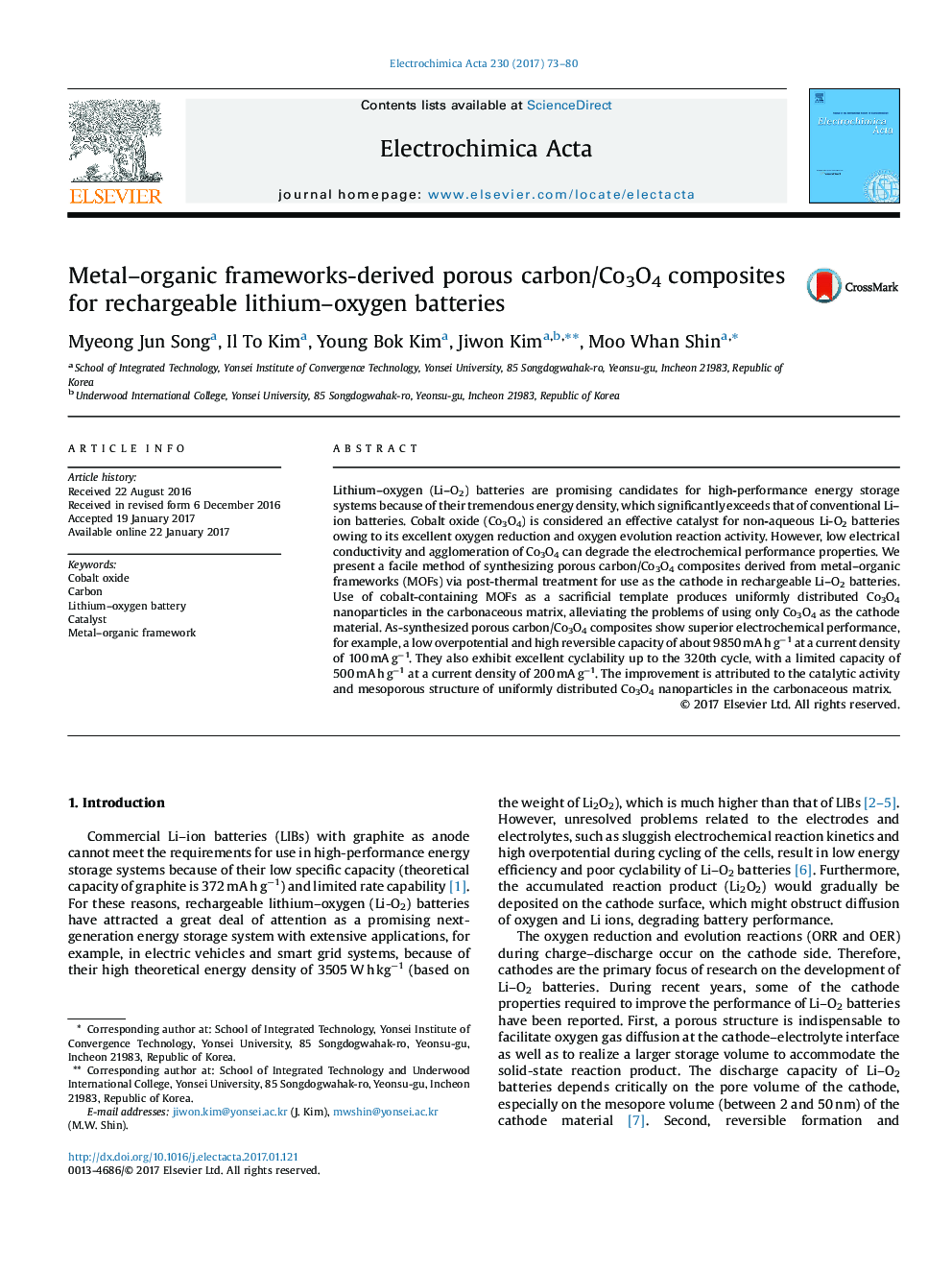| کد مقاله | کد نشریه | سال انتشار | مقاله انگلیسی | نسخه تمام متن |
|---|---|---|---|---|
| 6471360 | 1424127 | 2017 | 8 صفحه PDF | دانلود رایگان |

- We develop porous carbon/Co3O4 composites for Li-O2 batteries.
- Porous carbon/Co3O4 composites are derived from cobalt-containing MOFs.
- Co3O4 nanoparticles catalyze both ORR and OER in a rechargeable Li-O2 system.
- The porous structure of the composites realizes a high discharge capacity.
- The uniform distribution of Co3O4 realizes effective catalytic effects.
Lithium-oxygen (Li-O2) batteries are promising candidates for high-performance energy storage systems because of their tremendous energy density, which significantly exceeds that of conventional Li-ion batteries. Cobalt oxide (Co3O4) is considered an effective catalyst for non-aqueous Li-O2 batteries owing to its excellent oxygen reduction and oxygen evolution reaction activity. However, low electrical conductivity and agglomeration of Co3O4 can degrade the electrochemical performance properties. We present a facile method of synthesizing porous carbon/Co3O4 composites derived from metal-organic frameworks (MOFs) via post-thermal treatment for use as the cathode in rechargeable Li-O2 batteries. Use of cobalt-containing MOFs as a sacrificial template produces uniformly distributed Co3O4 nanoparticles in the carbonaceous matrix, alleviating the problems of using only Co3O4 as the cathode material. As-synthesized porous carbon/Co3O4 composites show superior electrochemical performance, for example, a low overpotential and high reversible capacity of about 9850 mA h gâ1 at a current density of 100 mA gâ1. They also exhibit excellent cyclability up to the 320th cycle, with a limited capacity of 500 mA h gâ1 at a current density of 200 mA gâ1. The improvement is attributed to the catalytic activity and mesoporous structure of uniformly distributed Co3O4 nanoparticles in the carbonaceous matrix.
Journal: Electrochimica Acta - Volume 230, 10 March 2017, Pages 73-80